Day 72 Saturday, May 12, 2007
North Yellowstone to Little Bighorn (229 Miles) and to Ranchester, WY (54 Miles)
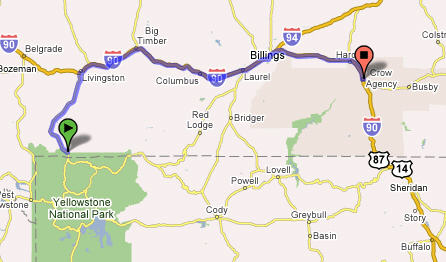
This morning we left the Yellowstone Mammoth Hot Springs campground and drove to Little Bighorn Battlefield Monument just south of Crow Agency, Montana.
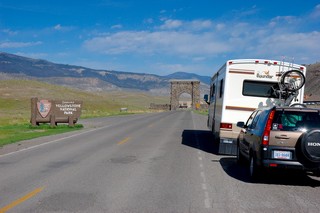
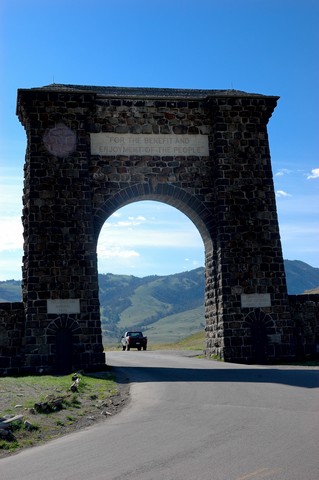
The picture above shows the original North Entrance to Yellowstone built in 1872.
Little Bighorn Battlefield National Monument is the site of the June 25, 1876 battle between the U.S. Army's 7th cavalry and several bands of Dakota Sioux, Cheyenne and Arapaho.
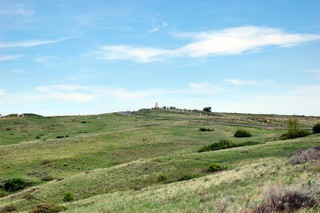
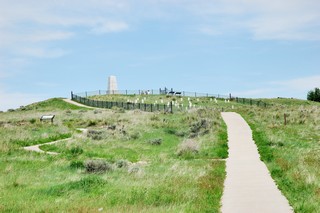
The above pictures are looking up to the top of Little Bighorn where Custer made his last stand. The tombstones you see are markers showing where the last solders fell as they were killed by the Indians.
Little Bighorn Battlefield National Monument near Crow Agency, Montana, commemorates one of America's most significant and famous battles, the Battle of the Little Bighorn. Here on June 25 and 26, 1876, two divergent cultures clashed in a life or death struggle.
Four hundred years of struggle between Euro-Americans and Native Americans culminated on this ground. Like a handful of battles in American history, the defeat of 12 companies of Seventh Cavalry by Lakota (Sioux), Cheyenne, and Arapaho warriors rose beyond its military significance to the level of myth. Thousands of books, magazine articles, performances in film and theater, paintings, and other artistic expressions have memorialized "Custer's Last Stand."
In 1879, the Little Bighorn Battlefield was designated a national cemetery administered by the War Department. In 1881, a memorial was erected on Last Stand Hill, over the mass grave of the Seventh Cavalry soldiers, U.S. Indian Scouts, and other personnel killed in battle. In 1940, jurisdiction of the battlefield was transferred to the National Park Service. These early interpretations were largely mono-cultural, honoring only the U.S. Army's perspective, with headstones marking where each fell.
The essential irony of the Battle of the Little Bighorn is that the victors lost their nomadic way of life after their victory. Unlike Custer's command, the fallen Lakota and Cheyenne warriors were removed by their families, and "buried" in the Native American tradition, in teepees or tree-scaffolds nearby in the Little Bighorn Valley. The story of the battle from the Native American perspective was largely told through the oral tradition.
Even so, today, no memorial honors the Native Americans who struggled to preserve and defend their homeland and traditional way of life. Their heroic sacrifice was never formally recognized - until now.
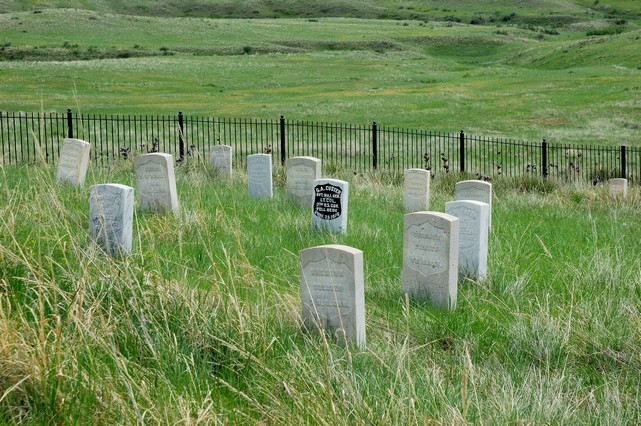
Here you can see the marker of Custer among the other fallen.
There was also a monument to recognize the Indians who fought and won this battle.
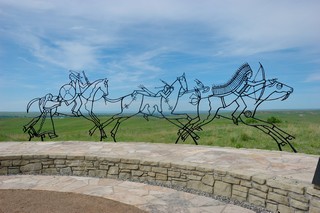
A panoramic of the Indian Memorial is below.

If you’re interested there is a WebCam at the battlefield; the address is below.
Little Bighorn Battlefield WebCams: http://www.nps.gov/libi/photosmultimedia/webcams.htm
From the battlefield we drove another 50 or so miles south into Wyoming to Ranchester where we found a very nice campground for the one night stay before heading out in the morning to see Devils Tower Monument south and east in Wyoming. See tomorrow’s post for the details.
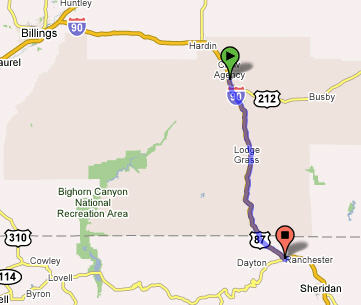

0 Comments:
Post a Comment
Links to this post:
Create a Link
<< Home